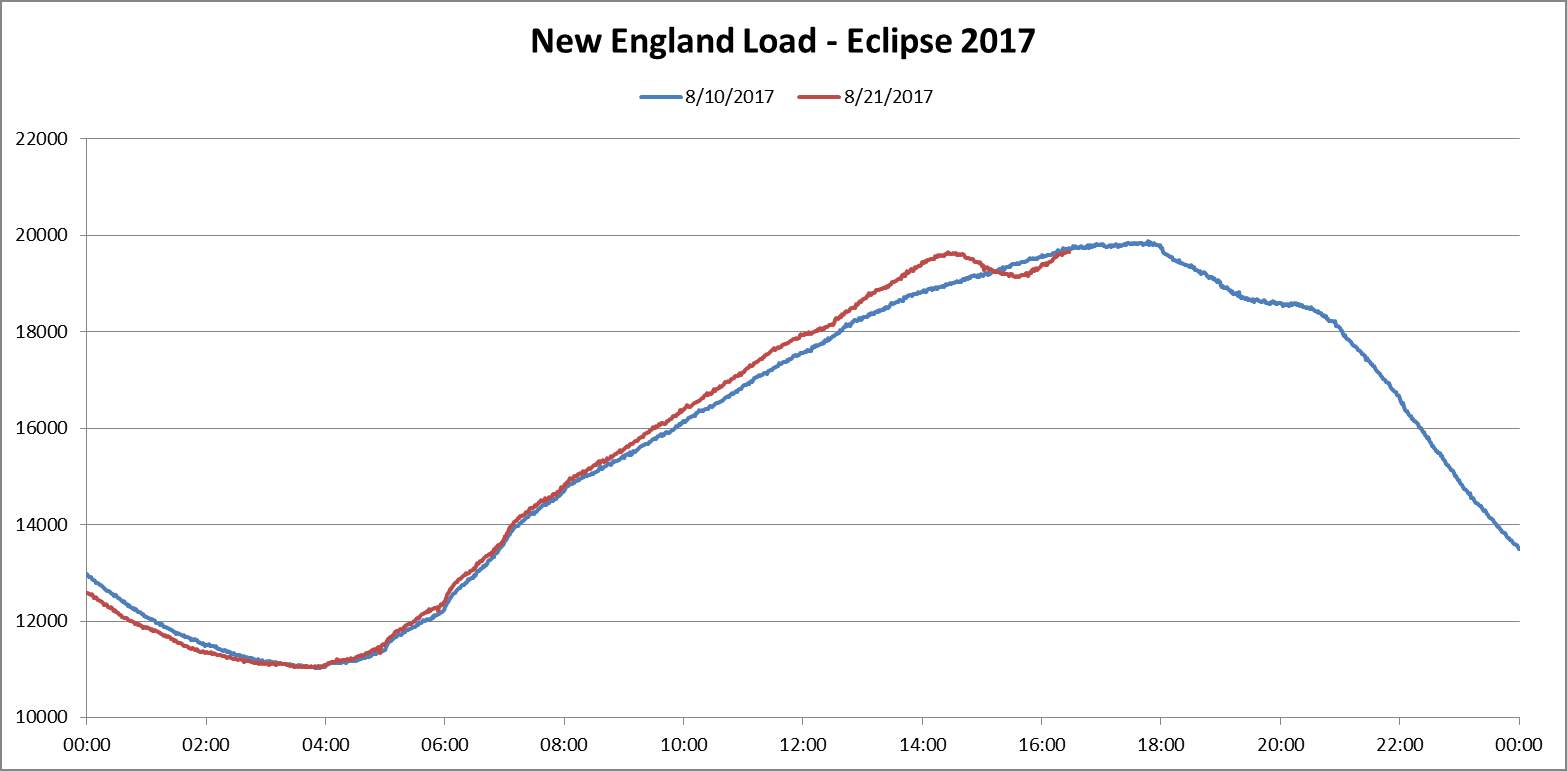New England power grid operations during August 21 partial eclipse
Three factors tempered the effect of the eclipse on electricity demand and PV output
New England was partially under the shadow of the moon on August 21 between about 1:20 p.m. and 4:00 p.m. The region reached peak obscuration at 2:44 p.m., when about 65% of the sun was blocked. The ISO was prepared for a drop in output from the region’s 2,000 megawatts (MW) of solar photovoltaic (PV) systems and subsequent rise in electricity demand on the grid. The vast majority of New England’s solar power comes from small-scale, distributed systems connected directly to homes and businesses or to local utilities—and not to the regional power system. These systems reduce the amount of electricity demand system operators see on the grid when the sun is up.
 Photo of the 2017 eclipse in Holyoke, Mass. by Theodore Paradise.However, three factors took place Monday that tempered the effect of the eclipse on electricity demand and PV output:
Photo of the 2017 eclipse in Holyoke, Mass. by Theodore Paradise.However, three factors took place Monday that tempered the effect of the eclipse on electricity demand and PV output:
- Human-demand effect: New Englanders departed from their normal routines to watch the eclipse, which reduced the amount of power being consumed during those hours. This in turn offset the amount of power that was not being generated by PV systems.
- Cloud coverage: High clouds over parts of the region reduced solar panel output for a majority of the morning leading up to the eclipse, which diminished any dramatic change that might have been seen on a cloud-free day.
- Lower temperatures, less AC: A noticeable temperature drop reduced electricity demand as air conditioning systems did not need to work as hard to maintain comfortable temperatures.
The graph below compares the day’s demand curve to August 10, which was a very similar day weather-wise but without the eclipse. Electricity demand tracked closely for most of the day with demand then rising on August 21 as the moon began to partially cover the sun and PV output diminished. Estimates show that electricity demand rose about 700 MW due to the interruption in solar generation.
The most striking effect on the demand curve was seen as the moon began to retreat from the path of sun. At around 2:45 pm, demand began to drop as solar panels started to produce electricity again.

Sufficient resources were available to cover the change in electricity usage, and the regional power system operated under normal conditions throughout the eclipse.
Related: ISO-NE prepared to operate grid through partial solar eclipse in August
- Categories
- Inside ISO New England
- Tags
- system operations
